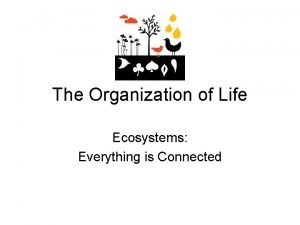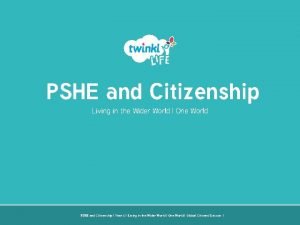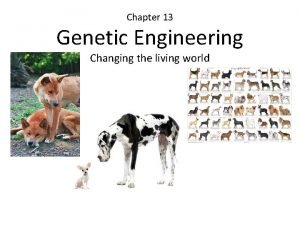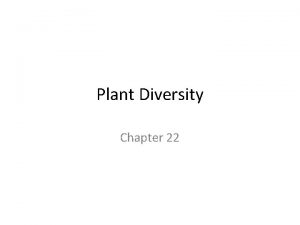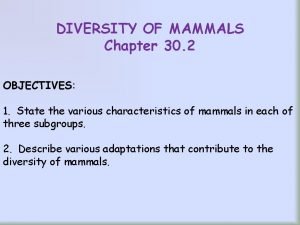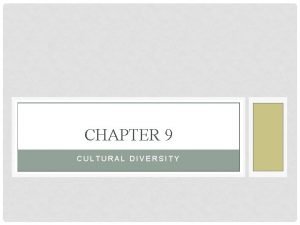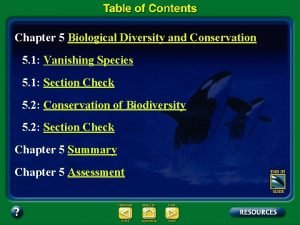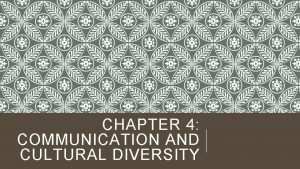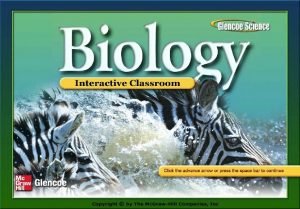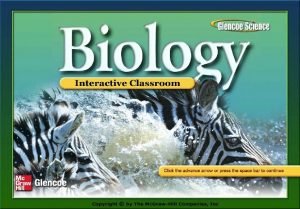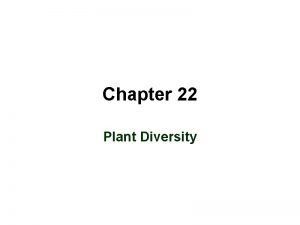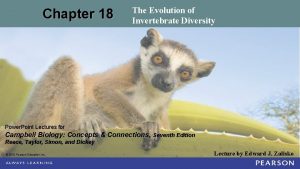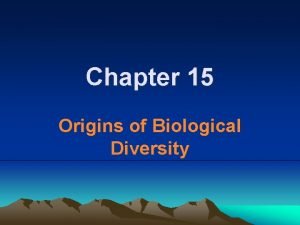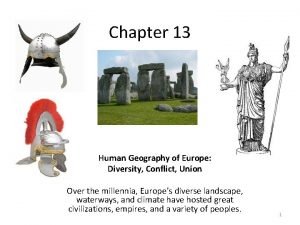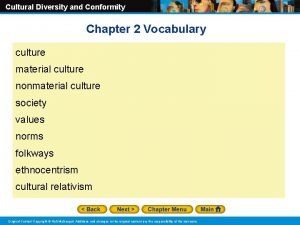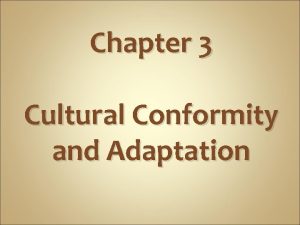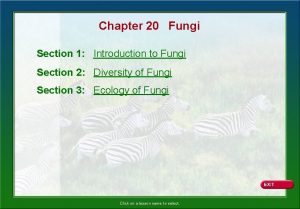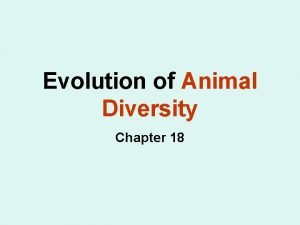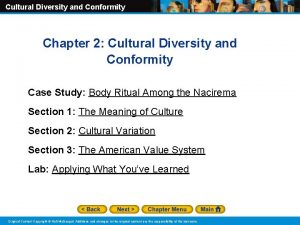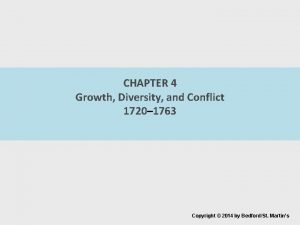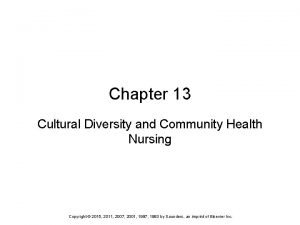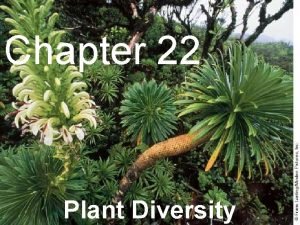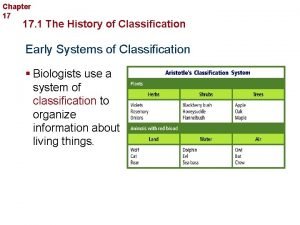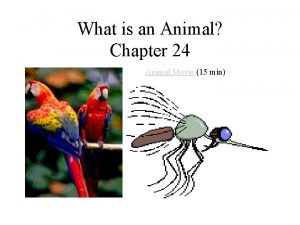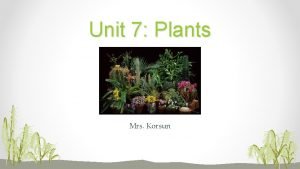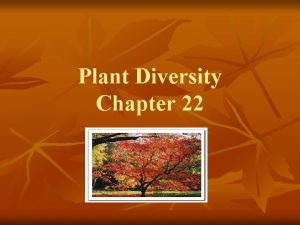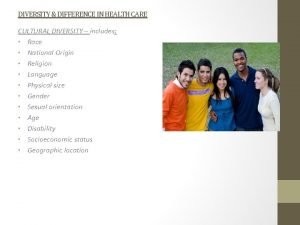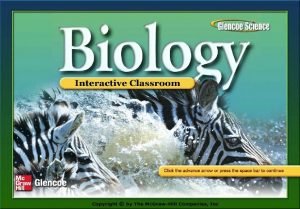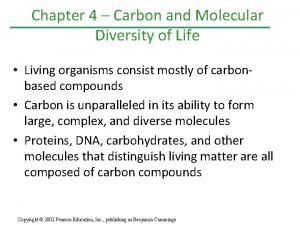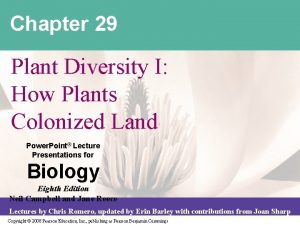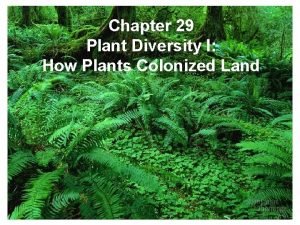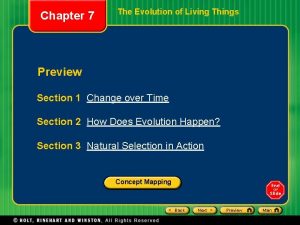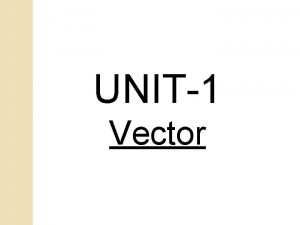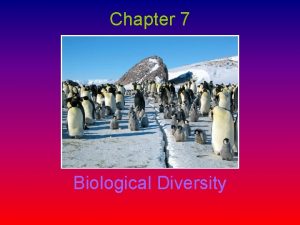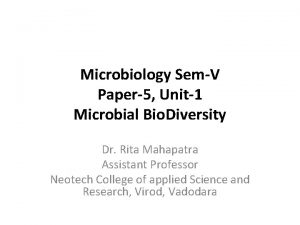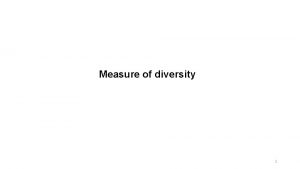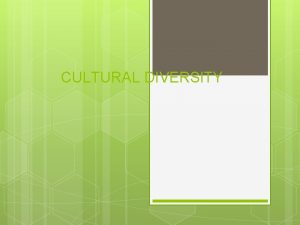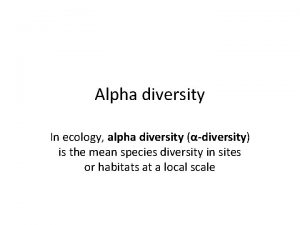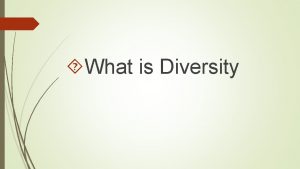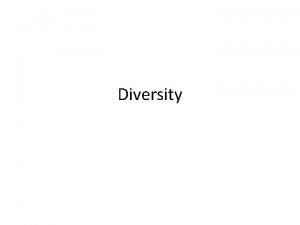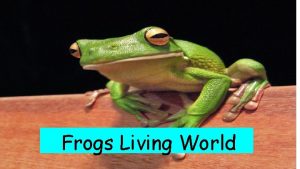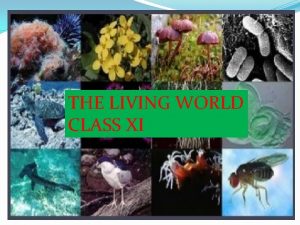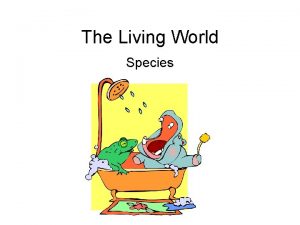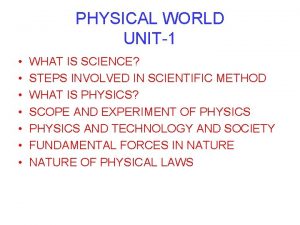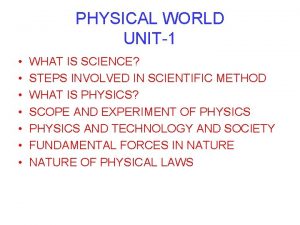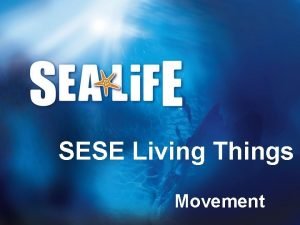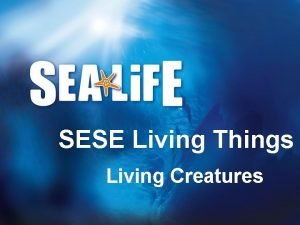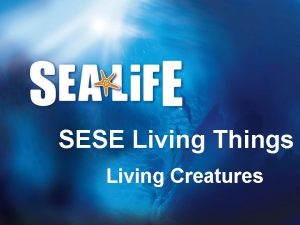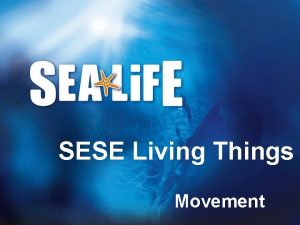UNIT1 DIVERSITY IN THE LIVING WORLD CHAPTER 1






















































































![Class – Cyctostomata � Eg – Lamprey [ petromyzen ] & hagfish [ myxine] Class – Cyctostomata � Eg – Lamprey [ petromyzen ] & hagfish [ myxine]](https://slidetodoc.com/presentation_image/b57c648343715def519c372219ddb527/image-87.jpg)












- Slides: 99


UNIT-1 DIVERSITY IN THE LIVING WORLD CHAPTER 1. THE LIVING WORLD CHAPTER 2. BIOLOGICAL CLASSIFICATION CHAPTER 3. PLANT KINGDOM CHAPTER 4. ANIMAL KINGDOM

Chapter 1 the living world

Taxonomic categories Classification involves hierarchy of steps in which each step represent a rank or category. Since the category is a part of overall taxonomy arrangements. taxonomical studies of all known organisms have led to the development of common categories. 1. Species 2. Genus 3. Family 4. Order 5. Class 6. Phylum 7. Kingdom

Taxonomical aids The collection of the prime sources of various species of plant, animals and other organisms, which help in their classification and identification 1. Herbarium : is a store house of collected plant specimens that are dried, pressed and preserved on sheets.

2. Botanical gardens: have collection of living plants for reference plant species in these gardens are grown for identification purpose and each plant is labelled indicating its botanical/ scientific name and its family.

3. Museum: have collections of preserved plant and animal species for study and reference. 4. Zoological park: these are the places where wild animals are kept in protected environments under human care and which enable us to learn about their food habits and behavior.

5. Key: are based on the contrasting characters generally in a pair called couplet. used for identification of plants and animals based on the similarities and dissimilarities.

Chapter 2 biological classifications

Biological classification The process of grouping living organisms to convenient categories based on simple characters is known as Biological classifications. ØTwo kingdom classifications § Plants (Autotrophs, Cellwall, Donot move) § Animals(Hetrotrophs, No cellwall, Can move) § Linnaeus- Plantae and Animalia

ØFive kingdom classifications(R. H WHITTAKER 1959) Main criteria for classification üComplexity of cell structure (Prokaryotes / Eukaryote) üBody organizations(Unicellular/ Multicellular) üMode of nutrition(Autotrophic/ Heterotrophic/Holozoic) üLife style(Producers/ Consumers/ Decomposers) üPhylogenetic relationship (Revelutionary history) v. Five kingdoms are ØKingdom monera (bacteria)- prokaryotic unicellular ØKingdom fungi- multicellular eukaryotic ØKingdom plantae- multicellular eukaryotic ØKingdom animalia- multicellular eukaryotic

v. Kingdom- Monera(eg. Bacteria) Habitats- omnipresent Grouped in to 4 groups based on their shape. 1. cocus(spherical) 2. Bacillus(rod) 3. Vibiro (comma) 4. spirillum (spiral) § § § v. Kingdom monera- includes; 1. Archaebacteria 2. Eubacteria(Cyanobacteria, Chemosynthetic and Hetrotropic) 3. Mycoplasma

1. Archaebacteria- Harsh habitats, Halophiles(saline) Thermoacidophiles (hot spring), Methanogens (gut of ruminants) 2. Eubacteria- true bacteria rigid cell wall- motile flagellum Autotrophic bacteria- Cyanobacteria(BGA) have chlorophyll a unicellular, Colonial/ Filamentous. • Marine/ Terrestrial habitat/ Gelatinous sheath • Form blooms- can fix nitrogen heterocysts. Eg. Nostoc, Anabaena.

Chemosynthetic bacteria- Oxidise nitrates, nitrites and ammonia release energy(ATP) Help in recycling of nutrients(eg. Pseudomonas, nitrobacter) Heterotropic bacteria- Decomposers- making curd from milk, antibiotics, nitrogen fixing(rhizobium) some are pathogenic(cause diseases) cholera, TB, diarrhea. • reproduction by binary fission, spore/ sexual reproduction 3. Mycoplasma- no cell wall- smallest living cell. Anaerobic- pathogenic in animals and plants

Kingdom- protista Ø Unicellualr- eukaryotic- aquatic ØFlagella/ cilia- reproduce sexually/ asexually Chrysophyta: ØPlanktons diatoms and golden algae(desmids) ØFreshwater/ marine ØMicroscopic- photosynthetic ØIn diatoms, cell wall in indestructible(silica) from diatomaceous earth, its being gritty used for polishing, fitration of oil and syrups. ØChief producers in oceans.

Dinoflagellates. Marine photosynthetic, yellow, green, blue or red pigments- cell wall is cellulosic- have 2 flagella- red dinoflagellate (gonyaulax) forms red tides and toxins are released. Euglenoid -eg. Euglena Majority of them are fresh water organism found in stagnant water instead of the cell wall a protein rich layer is present, called pellicle. Pellicle is flexible with flagella- they are Myxotropic, because Photosynthetic (in light) Hetrotrophs (when no light) Myxotrophs- mixture of both autotrophs and hetrotrophs

Protozoans : All are hetrotrophs- predators/ parasites • there are 4 major groups; amoeboid protozoans: Live in Fresh water, sea and moist soil. Marine forms have silica shells. Some of them such as Entamoeba(parasite) cause amoebic dysentery Flagellated protozoans- free living/ parasites have flagella- parasites cause diseases- sleeping sickness(trypanoroma) is a parasite of flagellated protozoans Ciliated protozoans- aquatic cilia, cavity gullet eg. Paramoecium sporozoans. - spore stage in their life cycle. Plasmodium causes malarial fever

Kingdom- fungi q Multi cellular- eukaryotic- heterotrophic- cosmopolitan- grow in warm and humid places. q Fungi are filamentous with long, slender thread like hyphae and the net work of hyphae is known as mycelium- they can be septate or non septate (aseptate) q Multinucleated cytoplasm(coenocytic hyphae) q Cellwall is made up of chitin and polysaccharides. q Parasitic/symbionts( lichens and mycorrhizae)

Symbionts of algae and fungi(lichens) and pine trees roots and fungi(mycorrhizae) on roots to absorb water q. Reproduction by fragmentation, fission, buddin. A sexual reproduction by oospores, ascospores, basidiospores. Sexual reproduction steps 1. Plasmogamy 2. Karyogamy 3. Meiosis in zygote result in haploid spores- dikaryon q Dikaryophase q Zygote (2 n-diploid) haploid spores( n- haploid)

Based on morphology of mycelium of spore formation, fruiting bodies, there 4 classes; 1. Phycomycetes 2. Ascomycetes 3. Basidiomycetes 4. Deuteromycetes v Phycomycetes: • Aquatic decaying wood mycelium is a separate coenocytic • Asexual reproduction by zoospores(motile)/ aplanospores(non motile) • Eg: rhizopus, mucor.

Ascomycetes: (Sac fungi) • Multicellular (penicillium)/ unicellular(yeast) • Saprophytic- decomposers- parasitic –coprophilous • Mycelium is branched and septate- asexual spores are called conidia • Sexual spores are called ascospores • Eg: aspergillus, neurospora v. Basidiomycetes: (eg: mushrooms/ bracket fungi/ puffballs) • Grow in soil, logs, tree stumps, in plant bodies as parasitic (as rust and smuts) • Mycelium is branched and septate • Reproduction by fragmentation • Dikaryon – basidium – karyogamy • Eg: agaricus (mushroom) v

v. Deuteromycetes: • Imperfect fungi mycelium is separate and branched • Only asexual reproduction by conidial spores • Saprophytes/ parasitic / decomposers • Help in mineral cycling • Eg: trichoderma, alternaria

Kindom - plantae: • Autotrps- size varies from herbs to all trees. There are different groups. • Algae • Bryophytes • Pteridophytes • Gymnosperms • Angiosperms monocotyledons and dicotyledons

Kingdom - animalia: • Heterotrophs – locomotory – holozoic / saprophytic / parasitic – cosmopolitans. • It consist of two subkingdom invertebrata with 9 phylum and phylum vertebrata (Chordata) with 5 classes.

Virus: q Pasteur coined the term virus, which means venom/ poison. It is made of a outer protein coat and a centre genetic material(RNA/DNA). A virus is a nucleoprotein and the genetic material is infectious. q Virus that infect plants have single strand RNA and those infect animals have either single or double RNA or double stranded DNA. Bacteriophages are viruses that infect the bacteria. Viruses cause disease like mumps, small pox, herpes, influenza and AIDS. In plants the symptoms can be mosaic formation, leaf rolling, and curling, yellowing, dwarfing and stunted growth

Viroids T. O. Diener discovered a new infectious agent that was smaller than viruses and caused potato spindle tuber disease. It has only a free RNA and lacked the protein coat, so named as viroid. § Lichens §Symbiotic association between algae and fungi. Phycobiont is algal component. §Fungi and mycobiont is a fungal component, which provide shelter and absorb mineral nutrients and water for its partner

Chapter 3 The Plant Kingdom

Classification of Plant Kingdom Gymnosperms Algae Fungi Bryophytes Pteridophytes Angiosperms Monocotyledonous Dicotyledonous

Plants They are multicellular. They all have chlorophyll and make their own food by Photosynthesis (autotrophic).

Gymnosperms or Non-flowering plants Plant Kingdom Gymnosperms Algae Fungi Bryophytes Pteridophytes Angiosperms Monocotyledonous Dicotyledonous The plants that do not have flowers, but usually bear spores are called Gymnosperms. Non flowering plants are usually simpler than flowering plants. But because they do not have flowers, they have to reproduce in other ways. Non flowering plants grow from spores and not seeds.

Algae Plant Kingdom Gymnosperms Algae Fungi Bryophytes Pteridophytes Angiosperms Monocotyledonous Dicotyledonous Algae, diverse group of simple, plantlike organisms. Like plants, most algae use the energy of sunlight to make their own food. However, algae lack the roots, leaves, and other structures typical of true plants.

Algae Plant Kingdom Gymnosperms Algae Fungi Bryophytes Pteridophytes Angiosperms Monocotyledonous Dicotyledonous Algae are the most important photosynthesizing organisms on Earth. They capture more of the sun’s energy and produce more oxygen than all plants combined. Algae form the foundation of most aquatic food webs, which support an abundance of animals.

Fungi Plant Kingdom Gymnosperms Algae Fungi Bryophytes Pteridophytes Angiosperms Monocotyledonous Dicotyledonous Fungus, any member of a diverse group of organisms obtain food by absorbing nutrients from an external source. The fossil record suggests that fungi were present 550 million years ago and may have evolved even earlier.

Fungi Today thousands of different types of fungi grow on and Gymnosperms absorb food from substances Algae such as soil, wood, decaying Fungi organic matter, or living plants and other organisms. Bryophytes They range from tiny, single. Pteridophytes celled organisms invisible to the naked eye to some of the Angiosperms largest living multicellular organisms. Plant Kingdom Monocotyledons Dicotyledons

Bryophytes or mosses Plant Kingdom Gymnosperms Algae Fungi Bryophytes Pteridophytes Angiosperms Monocotyledons Dicotyledons Moss, common name for members of a division of plants (Bryophytes), native to the entire land area of the world. Mosses grow on soil, rocks, and the bark of trees, and in bogs and shallow streams.

Bryophytes or mosses Plant Kingdom Gymnosperms Algae Fungi Bryophytes Pteridophytes Angiosperms Monocotyledons Dicotyledons Moss plants consist of small, slender stalks and leaves; vascular tissue is not present. They lack true roots, the functions of underground support and conduction being carried on by filamentous structures called rhizoids.

Pteridophytes or ferns Plant Kingdom Gymnosperms Algae Fungi Bryophytes Pteridophytes Angiosperms Monocotyledons Dicotyledons Fern, common name for any of a division of spore-producing plants. The fern phylum contains about 150 genera; estimates of the number of species range from 6000 to 15, 000. Ferns are found throughout the world. Most grow in damp, shady places, although certain species grow on dry ground, soil, or rocks. Some ferns, in fact, grow only in rocky places in fissures and crevices of cliff faces and in boulders. Others grow as epiphytes, or air plants, on trees.

Angiosperms Plant Kingdom Gymnosperms Algae Fungi Bryophytes Pteridophytes Angiosperms Monocotyledons Dicotyledons Angiosperm (Latin angi-, “enclosed”; Greek sperma, “seed”)common name for the division or phylum comprising flowering plants, the dominant form of plant life. Members of the division are the source of most of the food on which humans and other mammals rely and of many raw materials and natural products.

Included in the division are most shrubs and herbs, most familiar trees except pines and other conifers, and Plant Kingdom specialized plants such as succulents, Gymnosperms Algae parasites, and aquatic types. Fungi Although about 230, 000 species are Bryophytes Pteridophytes Angiosperms Monocotyledons Dicotyledons known, many remain obscure. Flowering plants occupy almost every ecological situation and dominate most natural landscapes.

Monocotyledons Plant Kingdom Gymnosperms Algae Fungi Bryophytes Pteridophytes Angiosperms Monocotyledons Dicotyledons The flowering plants which have seeds containing only one seed leaf are called monocotyledons

Dicotyledons Plant Kingdom Gymnosperms Algae Fungi Bryophytes Pteridophytes Angiosperms Monocotyledons Dicotyledons The flowering plants which have seeds containing two seed leaves are called dicotyledons

Chapter 4 animal kingdom

Basic Of Classification Level of organization � Cellular level of organisation : – eg In sponges , cells are in loose cell aggregates � Tissue level of organization : –eg- In coelenterates cells doing the same function form tissues � Organ level of organization –eg – Platyhelminths tissues are organized to form organ specialized for a particular function � Organ-System level of organization -: eg – in Annelid , Arthropod , etc . Organ has associated to form functional system with specific physiological function. Organ System show variations from animal to animal eg : - digestive system in platyhelminth has only one opening but others has 2 openings

Symmetry �Asymmetrical : – eg Sponges �Radial symmetry: - eg coelenterates , echinoderms �Bilateral symmetry: – eg Annelids, Arthropods etc

Embryonic layer Arrangement �Diploblastic : – Body wall 2 layered – ectoderm & endoderm eg : - Coelenterates with an undifferentiated mesoglea layer in between �Triploblastic: – body wall 3 layered – ectoderm & endoderm & mesoderm : eg – Platyhelminths

Coelom- A cavity between body wall & gut wall by mesoderm �Acoelomates : - NO Coelom -Eg Platyhelminths �Pseudoceolomates : - body cavity not lined by mesoderm but mesoderm is found in patches between ectoderm & endoderm - Eg Aschelminths �Coelomate: - eg – Annelid , arthropods etc –having true Coelom

Segmentation �some animals, the body is externally and internally divided into segments with a serial repetition of at least some organs. For example, in earthworm, the body shows this pattern called metameric segmentation and the phenomenon is known as metamerism. �Notochord – mesodermally derived rod-like structure formed on the dorsal side during embryonic development in some animals. Animals with notochord are called chordates and those animals which do not form this structure are called non-chordates, e. g. , porifera to echinoderms.


Phylum-Proifera Commonly called as Sponges v Marine & asymmetrical v Prinitive multicellular with cellular level organization v Water transport/canal system present. Many small opening called Ostia present on body wall thro which water enters leading into a central body cavity – Spongocoel that leads out through a single large opening called osculum v Hermaphrodite v Reproduce internal and development is indirect having larved stage that is different from adult v

v. Food enters the body along with water the Ostia. Choanocytes /collar cells live the spongocoel & canal in the body wall that trap the food & digest it within the intracellular digestion v. Body has a skeleton made up of spicules / sponging fibers.


Phylum – Coelenterata (Cindaria) �Aquatic, mostly marine �Cessile or free – swimming �Radially symmetrical animals �The word ‘cindaria’ derived from the word ‘cnidoblasts’/ cnidocytes present on tentacles for capturing prey & defense. It has stinging capsules or nematocytes �A central gastro-vascular cavity called coelenterons present that opens to outside through a single opening – hypostome �Digestion is partly extracellular & partly intracellular �Some of them have skeletons made of Ca. Co 3 eg – Coral �These have tissue-level og organization Polyp & Medusa

• Poly is a sessile & cylindrical from like Hydra , Adamsia etc. • Medusa is like an umbrella, free swimming Aurelia ( Jelly fish) • Those having both stages show alternation generation is Metagenesis Polyp produce medusa by asexually & medusa sexually produce ploy eg : Obelia Eg (a) Physalia ( Portugese man of war) (b) Adamsia ( Sea anemone) (c) Meandrine ( Brain Cord)


Physalia Brain coral Sea fan Sea Anemone

Phylum – Ctenophora Ø Commonly called sea walnuts Ø Exclusively marine Ø Radially symmetrical Ø Diploblastic with tissue level organization Ø Body bear & external rows of ciliated plates that help in locomotion Ø Digestion – both extra & intracellular Ø Bioluminescence is seen in them Ø Sexes are not separate Ø Reproduction by sexual means Ø Fertilization is external with indirect development Ø Eg – Pleurobrachia and Ctenoplana.



Phylum – Platyhelminthes � They have dorso-ventrally flattened body, hence are called flatworms � Endoparasites found in animals including human beings � Bilaterally symmetrical, triploblastic and acoelomate animals with organ level of organization � Hooks and suckers are present in the parasitic forms � Some of them absorb nutrients from the host directly through their body surface � Flame cells help in osmoregulation and excretion � Sexes are not separate � Fertilisation is internal and development is through many larval stages � Some members like Planaria possess high regeneration capacity � Examples: Taenia (Tapeworm), Fasciola (Liver fluke).


Blood fluke Tape worm

Phylum – Aschelminthes � Body of the aschelminthes is circular in cross-section, hence, the name roundworms. � Free living, aquatic and terrestrial or parasitic in plants and animals � They have organ-system level of body organization � Bilaterally symmetrical, triploblastic and pseudocoelomate animals. � Alimentary canal is complete with a well developed muscular pharynx � Excretory tube removes body wastes from the body cavity through the excretory pore. � Sexes are separated (dioecious), i. e. , males and females are distinct. � Often females are longer than males � Fertilisation is internal and development may be direct (the young ones resemble the adult) or indirect. � Examples: Ascaris (Round Worm), Wuchereria (Filaria



Phylum – Annelida � Metamerically segmented animal –segments looking like ring-so called Annelids � True coelomate present – partitioned segmentary by peritoneal membranuse septa � Triploblastic � Bilateral symmetry � Organ -system � Body covered with cuticle secreted by ectoderm � They possess longitudinal and circular muscles � Setae – locomotion organ in lower side. In some setae present on lateral appendages called Parapodia � Alimentary canal has mouth & anus at opposite with muscular pharynx, oesophagus , stomach & intestine

�Excretory wastes called Casting �Closed circulatory system- a heart is seen with one dorsal & one ventral blood vessel �Respiration – through skin found in moist condition � Nephridia help in osmoregulation and excretion �Nervous system – 2 cerebral ganglia with double ventral nerve coral �Sexes are separate except in leech & Earthworm – hermaphrodite �Larva is ochophore �Example : - (a) Pheretima (Earthworm) (b) Hirudinaria (Blood sucking leech) (c) Neries (d) Aphrodite



Phylum- Arthropoda �This is the largest phylum of Animalia which includes insects �The body of arthropods is covered by chitinous exoskeleton �The body consists of head, thorax and abdomen. �Respiratory organs are gills, book lungs or tracheal system �Sensory organs like antennae, eyes (compound and simple), statocysts or balance organs are present �Excretion takes place through malpighian tubules �Examples: - Apis (Honey bee) Bombyx (Silkworm) Laccifer (Lac insect) Vectors – Anopheles, Culex and Aedes



Phylum – Mollusca �This is the second largest animal phylum �Triploblastic �Coelomate � Bilaterally symmetrical � Terrestrial / aquatic �Body surrounded by calcareous shell (expect slugs & octopus) Internal shell – sepia �Body – unsegmented – 3 part – head & ventral muscular foot & a dorsal Viseral hump. Skin over visceral humo form a mantle that shell �Respiratory & excretory organs – gills present below mantle

Condt……. . �Head has tentacles �Mouth has a fill like rasping organ called �Oviparous �Larva – trochoplate / vellger �Example : - Pila (Apple snail), � Pinctada (Pearl oyster), � Sepia (Cuttlefish), � Loligo (Squid), � Octopus (Devil fish)



Phylum – Echinodermata �Ectoderm �Marine bear spines �Triploblastic �Coelamata �Adults are radially symmetrical – Body part in 5 axes ( pentamerous radial symmetry) �Larvae- Bilaterally symmetrical �Exoskeleto – calcareous having plate – like structure called ossicles �Mouth on lower side & anus an upper side

Condt……. . �Water vascular system present – radiating tube like appendages called tube feet- functions is locomotion , capturing food & respiration �A nerve ring oncircling the mouth from which 5 radical nerves begins supplying each arm. �Sexes separate with 5 pair of sex organ, one pair in each arm � Fertilizations is usually external �Free -swimming larva. �Example : - Asterias (Star fish), Echinus (Sea urchin), Antedon (Sea lily) Cucumaria (Sea cucumber) Ophiura (Brittle star).



Phylum – Hemichordata � Earlier considered as a sub-phylum under phylum Chordata � Small group of worm-like marine animals � Organ -system level of organization � Body (a) Bilaterally symmetrical (b) Triploblastic (c) Coelomate (d) Cylindrical (e) Divided into 3 - proboscis; collar & drunk � Circulatory system is of open type � Respiration takes place through gills � Excretory organ is proboscis gland � Sexes are separate � Fertilization is external. � Development is indirect. � Example : - Balanoglossus and Saccoglossus



Phylum – Chordata �Animals possessing notochord either thought life or during early embryonic life. The notochord is stiff & flexible rod lying ventral to nerve �Triploblastic �Coelomate �Bilaterally symmetrical �Post anal tail �Closed circulatory system �Dorsal hollow nerve cord �Paired pharyngeal gill slite � 3 sub phylum: - 1. Urochordata or Tunicata, 2. Cephalochordata and 3. Vertebrata.


Protochordata Vertebrata Notochord present during embryonic period & does not from vertebrate replaced by vertebral column in adults � All marine � Vertebral column have many vertebrate around � Urochordata / Acrania notochord along with dorsal nerve cord � Notochord present in tail of larva � Ventral muscular heart with 2/3/4 chamber � Example: - Ascidia , Salpa � Kidneys – excretion & , Doleolum osmoregulation � Cephalochordata /Acrania � 2 pairs of lateral appendages-fins / limbs � Notochord present from divided in 2 divisions – head to tail region & based on presence of jaw throughout life � Agnatha – No jaws. eg class : cydostomatalamprey � Example : - Branchiostoma – � Gnathostomata - Bear jaws – 2 super classes Amphioxes Chendrichythes and Osteichthyes � All have notochord but it �

Vertebrata Protochordata
![Class Cyctostomata Eg Lamprey petromyzen hagfish myxine Class – Cyctostomata � Eg – Lamprey [ petromyzen ] & hagfish [ myxine]](https://slidetodoc.com/presentation_image/b57c648343715def519c372219ddb527/image-87.jpg)
Class – Cyctostomata � Eg – Lamprey [ petromyzen ] & hagfish [ myxine] � Parasite on fishes � Elongated body have 6 -14 pair of gill slits for respiration � Sucking & circular mouth � No functional pineal eye � Single sex organ discharges gametes in coelomate � Cranium & vertebral column – cartilaginous � Persistent notochord � Heart surrounded by a cartilaginous capsule � Marine � Migrate into river for spawning � Ammocoete larva hatches out from eggs through metamorphosis that migrate into oceans �

Class – Chondrichthyes Class – Osteichthyes � Marine fishes � Fresh / marine � Cartilaginous � Bony endoskeleton Endoskeleton � 5 pairs of gills slits without gill cover � No swim bladder � Mouth ventral � Viviparous fertilization internal � Some like ray fish have electric organ, sting in sting ray 7 pairs of gill slits with gill cover – operculum � Swim bladder present � Mouth terminal � Oviparous fertilization external � No such electric organ present

Osteichthyes Chondrichthyes

Class – Amphibian � 2 phases in life cycle – adult & larvae �Larva is aquatic & adult is terrestrial �Require water for breeding & fertilization is external � 2 pairs of limbs �Body divided into head & trunk ; no neck present �Moist skin without scales � A tympanum replace the ear �Alimentary canal, urinary and reproductive tracts open into a common chamber called cloaca which opens to the exterior

Condt…… �Heart – 3 chambered , 2 auricles & 1 ventecial � Cool blooded �Double occipital cardyle & 10 pair of cronical nerve �Respiration in taportes- gills , adult – lungs & skin some breath thro gills in adult stage too �Sexes separate �Eg : - toad Frog Salamander Limbless amphibian



Class – Reptilian �Crawling animals �Body covered by dry , cornfied skin that contain epidermal scales/ scuter �Post and tail present �No external ear openings � 2 pair of limbs with 5 digits in each �Cold blooded �They are 3 – chambered �Carnivorous �Snakes & lizard shed their scales as shin cast �Internal fertilization �Eg : - Turtle ( chelna) Lizard ( Hemidadyles )


Class- Aves � Stream – lined body � Body has head , trunk , a pair of limbs � Body covered with feather � Forelimbs convert into feather � Bones – hollow � Warm blooded � 4 – chambered heart � No teeth in beak � Alimentary canal has crop & gizzard � Sharp eyesight � Oil gland at the base of tail � Oviparous � Eg : - Crow Parrot Owl

Class – Mammalia �Found in a variety of habitats �Milk producing mammary glands �Skin has hair �External ear �Teeth are present � 4 – chambered heart � Diaphragm divided body cavity in upper – chest and lower –chest �Eg : - Whale ( bulaenoptero) , Monkey ( macau) , Eques ( horse)


 Unit1 lesson2
Unit1 lesson2 Parasitic heterotrophs
Parasitic heterotrophs What is ecosystem biodiversity
What is ecosystem biodiversity Genetic diversity vs species diversity
Genetic diversity vs species diversity Diversity of living things
Diversity of living things Chapter 23 living in a world at war
Chapter 23 living in a world at war Pyramid hesd
Pyramid hesd Is tomato living or nonliving
Is tomato living or nonliving Living non living dead
Living non living dead What is the smallest living unit in all organisms?
What is the smallest living unit in all organisms? Communicating in a world of diversity
Communicating in a world of diversity Ap world history chapter 25 africa and the atlantic world
Ap world history chapter 25 africa and the atlantic world Wider world meaning
Wider world meaning Living godly in an ungodly world
Living godly in an ungodly world Character of living world is
Character of living world is Section 13-1 changing the living world
Section 13-1 changing the living world Sergey tyulenev
Sergey tyulenev Inspiring healthy living around the world
Inspiring healthy living around the world Live godly in this present world
Live godly in this present world Hình ảnh bộ gõ cơ thể búng tay
Hình ảnh bộ gõ cơ thể búng tay Ng-html
Ng-html Bổ thể
Bổ thể Tỉ lệ cơ thể trẻ em
Tỉ lệ cơ thể trẻ em Gấu đi như thế nào
Gấu đi như thế nào Chụp tư thế worms-breton
Chụp tư thế worms-breton Chúa yêu trần thế
Chúa yêu trần thế Các môn thể thao bắt đầu bằng tiếng bóng
Các môn thể thao bắt đầu bằng tiếng bóng Thế nào là hệ số cao nhất
Thế nào là hệ số cao nhất Các châu lục và đại dương trên thế giới
Các châu lục và đại dương trên thế giới Công của trọng lực
Công của trọng lực Trời xanh đây là của chúng ta thể thơ
Trời xanh đây là của chúng ta thể thơ Mật thư tọa độ 5x5
Mật thư tọa độ 5x5 Làm thế nào để 102-1=99
Làm thế nào để 102-1=99 Phản ứng thế ankan
Phản ứng thế ankan Các châu lục và đại dương trên thế giới
Các châu lục và đại dương trên thế giới Thơ thất ngôn tứ tuyệt đường luật
Thơ thất ngôn tứ tuyệt đường luật Quá trình desamine hóa có thể tạo ra
Quá trình desamine hóa có thể tạo ra Một số thể thơ truyền thống
Một số thể thơ truyền thống Cái miệng bé xinh thế chỉ nói điều hay thôi
Cái miệng bé xinh thế chỉ nói điều hay thôi Vẽ hình chiếu vuông góc của vật thể sau
Vẽ hình chiếu vuông góc của vật thể sau Nguyên nhân của sự mỏi cơ sinh 8
Nguyên nhân của sự mỏi cơ sinh 8 đặc điểm cơ thể của người tối cổ
đặc điểm cơ thể của người tối cổ V. c c
V. c c Vẽ hình chiếu đứng bằng cạnh của vật thể
Vẽ hình chiếu đứng bằng cạnh của vật thể Tia chieu sa te
Tia chieu sa te Thẻ vin
Thẻ vin đại từ thay thế
đại từ thay thế điện thế nghỉ
điện thế nghỉ Tư thế ngồi viết
Tư thế ngồi viết Diễn thế sinh thái là
Diễn thế sinh thái là Dạng đột biến một nhiễm là
Dạng đột biến một nhiễm là Bảng số nguyên tố lớn hơn 1000
Bảng số nguyên tố lớn hơn 1000 Tư thế ngồi viết
Tư thế ngồi viết Lời thề hippocrates
Lời thề hippocrates Thiếu nhi thế giới liên hoan
Thiếu nhi thế giới liên hoan ưu thế lai là gì
ưu thế lai là gì Sự nuôi và dạy con của hổ
Sự nuôi và dạy con của hổ Khi nào hổ mẹ dạy hổ con săn mồi
Khi nào hổ mẹ dạy hổ con săn mồi Sơ đồ cơ thể người
Sơ đồ cơ thể người Từ ngữ thể hiện lòng nhân hậu
Từ ngữ thể hiện lòng nhân hậu Thế nào là mạng điện lắp đặt kiểu nổi
Thế nào là mạng điện lắp đặt kiểu nổi Chapter 22 plant diversity
Chapter 22 plant diversity Chapter 30 section 2 diversity of mammals
Chapter 30 section 2 diversity of mammals Chapter 9 cultural competence
Chapter 9 cultural competence Chapter 8 study guide human resources culture and diversity
Chapter 8 study guide human resources culture and diversity Chapter 8 study guide human resources culture and diversity
Chapter 8 study guide human resources culture and diversity Chapter 5 diversity and human needs and development
Chapter 5 diversity and human needs and development Chapter 5 biological diversity and conservation
Chapter 5 biological diversity and conservation Chapter 4 communication and cultural diversity
Chapter 4 communication and cultural diversity Mammals characteristics
Mammals characteristics General characteristics of arthropods
General characteristics of arthropods Chapter 22 plant diversity answer key
Chapter 22 plant diversity answer key Chapter 18 the evolution of invertebrate diversity
Chapter 18 the evolution of invertebrate diversity Chapter 15 origins of biological diversity answers
Chapter 15 origins of biological diversity answers Diversity in the uk
Diversity in the uk Chapter 10 cultural diversity
Chapter 10 cultural diversity Sociology chapter 2: cultural diversity and conformity
Sociology chapter 2: cultural diversity and conformity Cultural diversity and conformity chapter test form a
Cultural diversity and conformity chapter test form a Chapter 20 section 1 characteristics of fungi
Chapter 20 section 1 characteristics of fungi Animal diversity chapter
Animal diversity chapter Cultural diversity and conformity section 3
Cultural diversity and conformity section 3 Growth diversity and conflict chapter 4
Growth diversity and conflict chapter 4 Chapter 4 growth diversity and conflict
Chapter 4 growth diversity and conflict Culturological assessment
Culturological assessment Government chapter 21 diversity and discrimination
Government chapter 21 diversity and discrimination Chapter 22 plant diversity answer key
Chapter 22 plant diversity answer key Organizing life's diversity
Organizing life's diversity Cultural diversity 3939 answers
Cultural diversity 3939 answers Tiburonia granrojo
Tiburonia granrojo Chapter 20 plant diversity
Chapter 20 plant diversity Plant diversity chapter
Plant diversity chapter General features of animals
General features of animals Chapter 13 diversity and difference in health care
Chapter 13 diversity and difference in health care Chapter 5 biological diversity and conservation
Chapter 5 biological diversity and conservation Chapter 4 carbon and the molecular diversity of life
Chapter 4 carbon and the molecular diversity of life Charophytes characteristics
Charophytes characteristics Microphyll vs megaphyll
Microphyll vs megaphyll Chapter 7 the evolution of living things answers
Chapter 7 the evolution of living things answers Chapter 22 living in hard times
Chapter 22 living in hard times Jeremiah potter
Jeremiah potter




